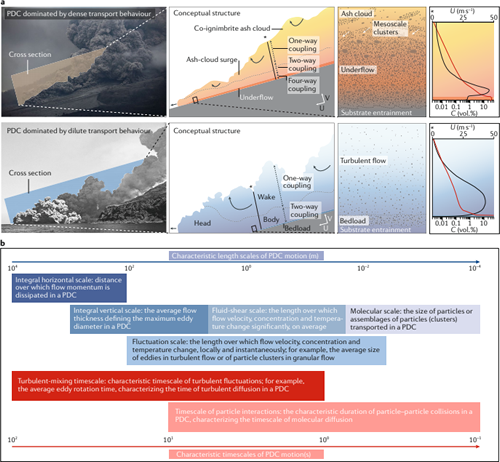Multiphase flow behaviour and hazard prediction of pyroclastic density currents

Lube G., E.C. P. Breard, T. Esposti-Ongaro, J. Dufek and B. Brand (2020).
Nature Reviews – Earth & Environment, 1, 348–365, https://doi.org/10.1038/s43017-020-0064-8.
Abstract
Pyroclastic density currents (PDCs) are dangerous multiphase flows originating from volcanic eruptions. PDCs cause more than a third of volcanic fatalities globally and, therefore, development of robust PDC hazard models is a priority in volcanology and natural hazard science. However, the complexity of gas–particle interactions inside PDCs, as well as their hostile nature, makes quantitative measurements of internal flow properties, and the validation of hazard models, challenging. Within the last decade, major advances from large-scale experiments, field observations and computational and theoretical models have provided new insights into the enigmatic internal structure of PDCs and identified key processes behind their fluid-like motion. Recent developments have also revealed important links between newly recognized processes of mesoscale turbulence and PDC behaviour. In this Review, we consider how recent advances in PDC research close the gaps towards more robust hazard modelling, outline the need to measure the internal properties of natural flows using geophysical methods and identify critical future research challenges. Greater understanding of PDCs will also provide insights into the dynamics of other natural gravity currents and high-energy turbulent multiphase flows, such as debris avalanches and turbidity currents.


Devi effettuare l'accesso per postare un commento.